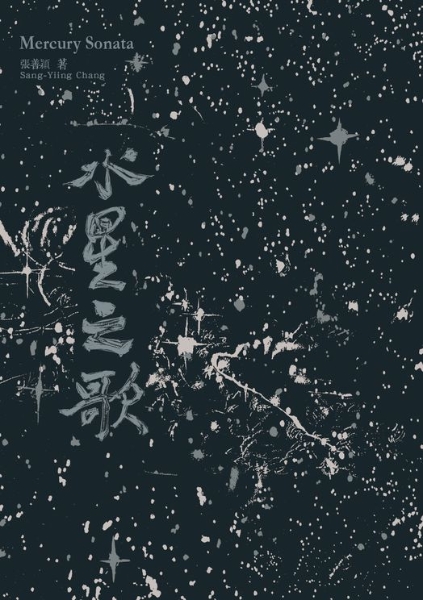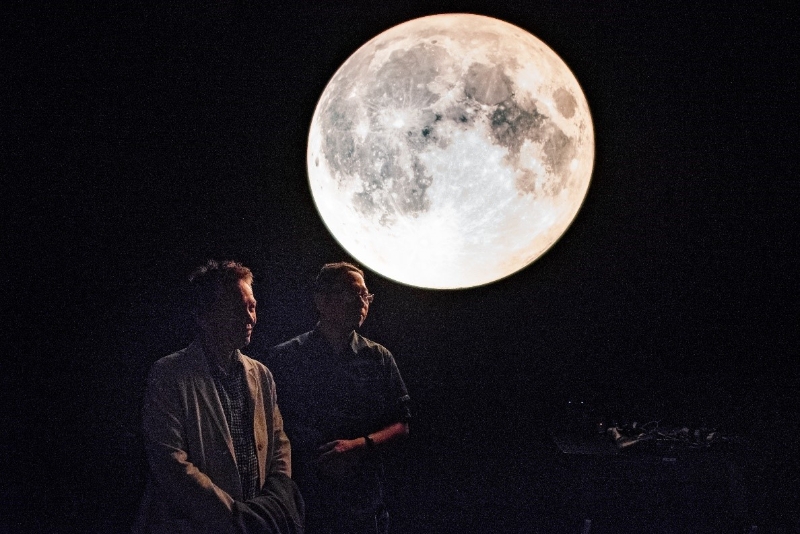"Lonely as we may feel, we are like millions of stars, merging into a boundless universe, quiet and eternal. We are so tiny, yet act as bearers of the universe's infinite hopes. We hurt others and are hurt at times, as we slowly find the best way to survive." —Dear Uranus by Taiwanese songwriter Enno Cheng
The surge in popularity of online video streaming, offering easy access to a plethora of science fiction (sci-fi) movies with an even wider variety of themes, has gradually aroused interest in cosmology among a larger demographic. This is not restricted to a basic understanding of physics, but has even sparked novel ideas in religion, philosophy, and esotericism.
The pursuit of uncharted territory in the cosmos is naturally accompanied by an urge to seek spiritual truth deep within the mind. The vastness of the universe and all its galaxies reminds us of how tiny we are as humans, and awakens our yearning for eternity and curiosity about the unknown, helping us identify the value of existence. The limitless universe outside drives our soul to wander freely in our inner microverse. The diverse works produced by artists from all fields also reflect inspiration from the exploration of the outer and inner universes. The recipients of grants by the National Culture and Arts Foundation (NCAF) are no exception: many artists have delivered stunning and unique "astronomical" works based on the theme of the "universe".
Start of an Interstellar Journey
A thrilling, even breathtaking, musical motif usually marks the beginning of an interstellar journey in a sci-fi film. Put your headphones on and press the "Play" button. The curtain is lifted to the crisp beating of percussion, revealing an ocean of stars that backdrops this intergalactic trip.
In the Star Wars concert series by Taipei Percussion, the "stars" are the central theme of the entire program. The pieces chosen or commissioned for the performances are all related to the stars, ranging from string ensemble to percussion ensemble music, and taking listeners on a mind-blowing journey across the stars. The music is restless at times, as if quickly hopping from one planet to another through a star-studded firmament. It is enigmatic sometimes, an immeasurable darkness that enables listeners to feel the infinite quietude of the universe.
Spell a Personal Galaxy Through Poetry
Recipients of the Literature grant transcript and build their "mind-verse" through words. In Sang-Yiing Chang's book Mercury Sonata (水星之歌), the universe's natural phenomena act as protagonist, painting a picture of the small moments in life, life philosophy, and mental and spiritual growth. Chang believes that as we wade between the known and the unknown, we are looking for "meaning", not just "understanding". It is therefore adequate to say that Chang's poetry is also his personal philosophy.
Poetry also brings to mind popular music—both often deal with love, a subject that doesn't fail to make people fall head over heels despite remaining intrinsically the same through the ages. Yu Lu's poetry collection Luminant in the Galaxy (星系明體) expresses feelings of love and frustration through elements like water and the stars. The poet mumbles in conversation with heart and soul to disperse the mist and persuade the beloved by exposing the voices of the inner mind.
Cosmic Children's Stories by Bing-Hwang Hwang, on the other hand, adopts a sci-fi perspective of the universe, presenting magical narratives starring the cosmos and planet Earth through the creative project. The reader returns to childhood and is transported to a fantastic tale. For Hwang, as long as there are facts that elude us in this universe, there will be no limit for inquiry by kids or adults. We will always be children in this unfathomable cosmos.
A Cosmic Philosophy Dictated by Humans
Visual artists often look to philosophical ideas to find answers concerning this perplexing, voiceless universe. Creators turn to experience and intellectual literature to adapt a central philosophy for their art through constant deliberation and reinterpretation, as shown by the content of their works. Among the grantees, Yin-Ju Chen's Stellar Evaluations series, Extrastellar Evaluations III: Entropy: 25800, and Liquidation Maps attempt to discuss the mysterious energy of a virtualized universe and connect it with historical facts of the human world. Chen's art conveys apocalyptic prophecies of a dystopia. Just like the universe's entropy1 phenomenon, Entropy will eventually pull the universe down into perpetual chaos, implying humanity's pending doom caused by fatal greed and desire. Whether intentionally or not, the viewer is forced to face and listen to the universe's objective discourse and history's queries.
The invisible energy of the cosmos is replicated and presented in concrete works visible to the eye. Tzu-Hsun Lee is adept at turning abstract fantasies into machine-like physical objects through art. A NCAF grantee, the Alien Space Craft Series consisted of manmade physical objects in the semblance of "quasi-organisms", something between a living being and a still object. The serial arrangement of a mechanical structure evokes the harmony present in life forms and the universe. Gravitational Wave by Te-Mao Lee uses the theoretical framework behind gravitational waves—energy released from the collision of black holes or neutron stars—as basis. The mechanism of the Michelson interferometer serves to produce a visual illusion of the space shaking, proving the existence of gravitational waves by allowing viewers to observe this otherwise invisible phenomenon.
Projection of the Moon and Stars
Elon Musk (1971-), founder of both automaker Tesla and spacecraft manufacturer SpaceX, started the SpaceX Mars program at the turn of the century to achieve the mission of bringing humans to Mars by 2026. Such declaration made global headlines as the first bold statement of its kind. People's fascination with sci-fi is not only restricted to conscious thinking, but often comes true in dreams. Both technology and the imagination are in constant flux, rendering the boundaries between fact and fiction blurrier by the day.
To the Moon, a resulting work of the VR Theater—Moon project by the Virtual and Physical Media Integration Association of Taiwan, and its exhibition were presented during the 50th anniversary of humans' first landing on the moon (2019). Laurie Anderson and Hsin-Chieh Huang harnessed VR technology to revive the legendary moment: viewers could be astronauts wandering in space by simply wearing a VR headset. Myth, literature, science, and politics were all part of the imagery until the viewer had to bid farewell to their astronaut body and walk alone into the farthest frontier of this virtual universe, enjoying a spectacular sight.
Riverbed Theatre received an International Cultural Exchange grant as it was invited to perform The First Time I Walked on the Moon at the 25th BeSeTo festival in Korea. With elevated seats and slanted image projection, the audience had the perspective of someone looking down on the Earth from the moon. The performers below were like a doppelganger of the self in a dream, a third-person perspective. The yearnings and limitations hidden deep within the mind manifested through shifting scenes of somnambulic trance. The First Time I Walked on the Moon prompts us to dream boldly, as what matters most is our experience overcoming darkness.
Remember Your Roots, Carry Love and Light
Whereas some works take people on a fantasy-like experience away from this planet, others lead us to focus on reality and the people, things, and events closer to us. The performance project 2017 Creation: Before we go to Mars by Open Theater Group tells the story of the Atu commune. Its inhabitants lead minimalistic lives of spiritual fulfillment. This conception of what human life could be in Mars is like a mix of sci-fi show Star Trek2 and the film Passengers, a utopian fantasy of future life in outer space. The protagonist Ikun from Mars and his mother have a heartfelt last conversation: "Our mission is to keep up with the pace of our imagination. We won't know until we get there. The farther you can tread, the larger your world is."
Flying Group Theatre's Puppets Love Natrue series hopes to help people appreciate the beauty of our surroundings. Puppets Love Natrue is a trilogy in which The Heart of the Universe features a puppet actor as protagonist, a child who daydreams of the universe inside the mind. With a mute lead, the audience easily becomes immersed in the story and the visual light and shadow effects. This physical environment abounds with all sorts of sensory stimuli. Flying Group Theatre's goal is to shine a beam of cosmic light on the hope hidden within people's darkness.
People Have Stars
"People have stars, but they aren't the same. For travelers, the stars are guides. For other people, they're nothing but tiny lights. And for still others, for scholars, they're problems. For my businessman, they were gold. But all those stars are silent stars. You, though, you'll have stars like nobody else." —The Little Prince
The abundance of accomplishments by NCAF grantees makes up a firmament full of bright stars. The many artists mentioned above in this article chose the infinite possibilities of the universe as the means to face the ceaseless metamorphoses, technological shifts between physical and virtual, life experiences, spiritual lessons, and other realities of our world. Their art is an endless journey of exploration and expression.
As a star transforms into a supernova, it will emanate a strong, immense light, sufficient to illumine an entire galaxy. Despite death is its inevitable fate, its burst into light is the last exertion before extinction, because it knows that this is the true purpose of a star's existence.
Notes
[1] An entropy is a physical property associated with a state of disorder or randomness in a physical system. It can be viewed as an irreversible physical force in a thermodynamic process, reflective of the directed and irreversible quality of heat transfer processes in nature. (Quoted from the bilingual vocabulary list and academic terminology website of the National Academy for Educational Research: https://terms.naer.edu.tw/detail/1680044/?index=4)
[2] Star Trek is a US sci-fi television series first aired in 1966. It was later adapted into a wide range of television series and movies.
Further Readings
"A Carcass Was Once a Living Being—Interview on the Publication of A Carcass Kissed by a Black Hole, the First Poetry Collection of Poet Chen Shao", NCAF Online Magazine
https://mag.ncafroc.org.tw/article_detail.html?id=297ef7226f893862016f9dd52a6d000b
https://mag.ncafroc.org.tw/article_detail.html?id=297ef7226f893862016f9dd52a6d000b
*Translator: Linguitronics
















